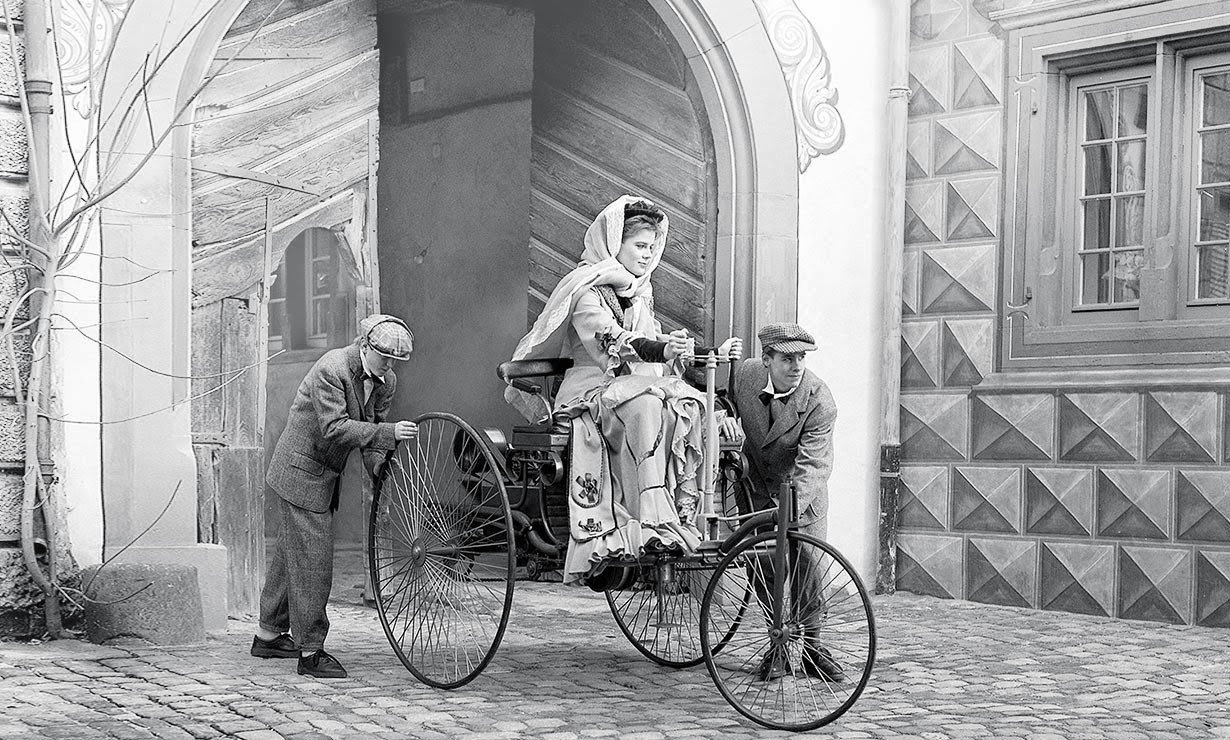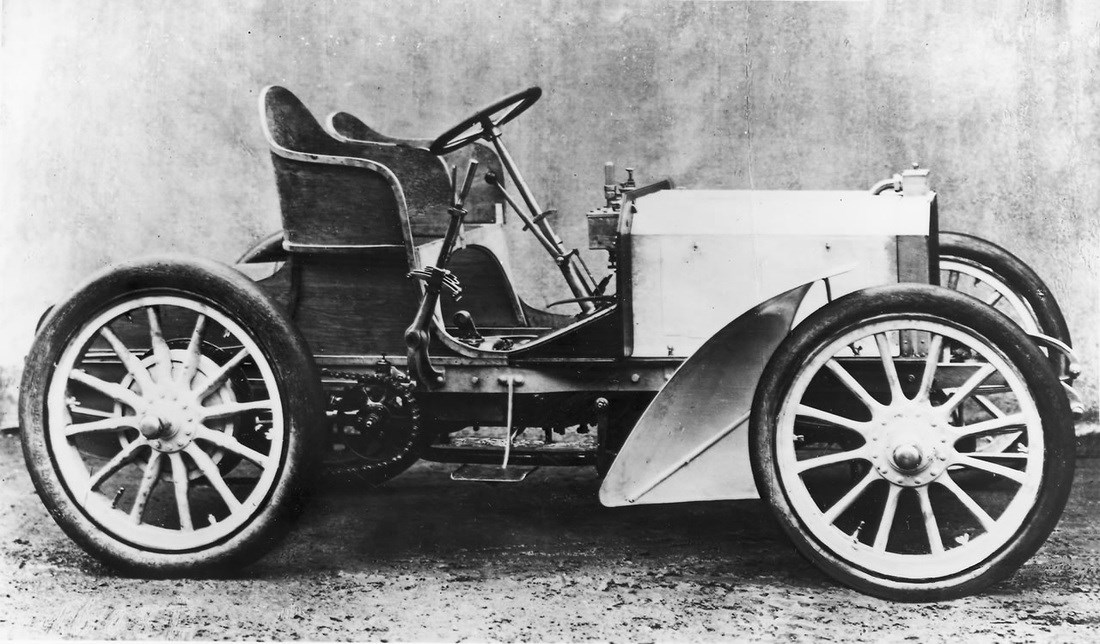Mercedes-Benz (or at least the company that was the genesis of M-B) is generally credited with inventing the car.
But which car? Karl Benz’s Patent Motorwagen (below) from 1886 is the one that usually gets the spotlight, partly because his wife Bertha Benz made it famous by undertaking the first-ever roadie, inventing fuel stations and modern brakes along the way. She also helped finance the whole project.

But that’s all a story for another day. Because the Motorwagen isn’t really a car, is it? Unless there’s a challenger brand on the market selling family models with three spindly wheels and a steering tiller, where you sit high on top of a wheezy engine.
Luckily for M-B, it also created the first example of what we might actually recognise as a car: the Mercedes 35hp. In 1900, Austrian business bigwig Emil Jellinek commissioned Daimler Motoren Gesellschaft (DMG) to make a “sports” car for his racing team. Company engineer Wilhelm Maybach got the job.
Jellinek wanted the 5.9-litre engine mounted low, with a long wheelbase and wide track for good handling. He wanted electric starting; because cranking isn’t cool.
Maybach’s finished product also boasted camshafts in place of the more usual vacuum valves and a world-first honeycomb radiator, reducing the amount of coolant required.
It also employed a new thing called a “steering wheel”. Earlier cars had featured the device, but this was the first time it had been used on a vehicle that was designed from the ground up, rather than being essentially a horseless carriage.

This new machine had the basic elements we now regard as key to the concept of a “car”. Jellinek was so pleased he named it after his daughter Mercedes.
It dominated the 1901 Nice-La Turbie motorsport event, with a record average speed of 51.4km/h. Paul Meyan, general secretary of the Automobile Club de France, said: “We have entered the era of Mercedes”. Nice. In Nice.
DMG added two more seats and some extra body addenda to the 35hp and produced a roadgoing version.
The various threads of this story didn’t come completely together into a company called “Mercedes-Benz” until 1926, but it all started here with the invention of the car. No, not that car. This car.



